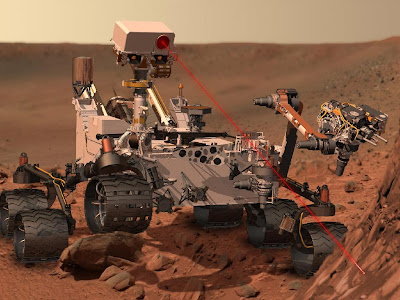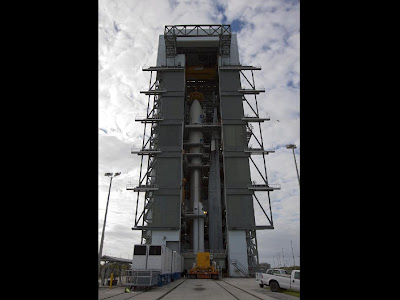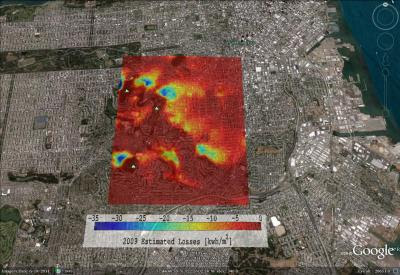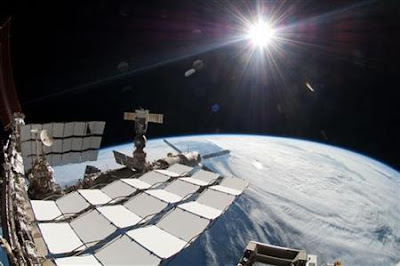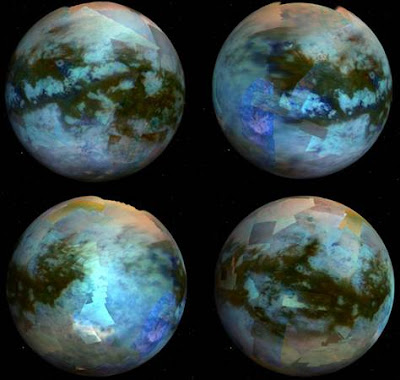
It’s the question the entire scientific community is asking: Will NASA’s Kepler find another Earth, and how soon?
2011 was full of reports that astronomers are one step closer to discovering another habitable Earth-like planet outside of our own solar system. NASA earlier this year confirmed the discovery of the first-ever planet in a habitable zone outside our solar system. That planet is roughly twice the size of Earth. French astronomers earlier this year confirmed the first exoplanet to meet key requirements for sustaining life, and just last week NASA announced the discovery of the first two Earth-sized planets orbiting a sun-like star.
In September, Kepler scientists turned science fiction into reality when they announced the first observation of a planet with two suns — such as Luke Skywalker’s home planet Tatooine in the “Star Wars” film series. Such planets are called “circumbinary” planets because they orbit a “binary pair” of stars. Until a few months ago, people only suspected two-star planets might exist.
The latest batch of discovery has left NASA clamoring for more. Speaking earlier this year, Geoffrey Marcy of the University of California, Berkeley, said he expects NASA’s Kepler Telescope to discover a habitable planet within the coming year.
“Sooner or later, Kepler will find a lukewarm planet with a size making it probably Earthlike,” said Geoffrey Marcy of the University of California, Berkeley. “We’re no more than a year away” from such a discovery, he said.
“We are finally there,” said David Charbonneau, an astronomer at the Harvard-Smithsonian Center for Astrophysics, who is part of the team leading the Kepler mission, led by colleague Francois Fressin. “This demonstrates for the first time that Earth-size planets exist around other stars and that we can detect them,” Fressin said.
NASA officials announced earlier this year that the Kepler telescope, which has reportedly already discovered more than 2,000 new planet candidates, is nearly doubling its previously known count. Still, scientists said the space agency should focus on identifying which planets are most likely to maintain the environment necessary for water to exist, and, possibly, life.
Meanwhile, a number of scientists said the latest news is exciting in that Kepler’s batch of discoveries show a number of Earth-like planets exist outside of the Solar System. Astronomers says the number of discoveries in 2011 prove that Kepler can indeed find planets as small as our own, an encouraging sign that planet hunters would someday succeed in the goal of finding Earth-like abodes in the heavens. Since the first Jupiter-size exoplanets, as they are known, were discovered nearly 15 years ago, astronomers have been chipping away at the sky, finding smaller and smaller planets.
“The primary goal of the Kepler mission is to find Earth-sized planets in the habitable zone,” said Francois Fressin of the Harvard-Smithsonian Center for Astrophysics in Cambridge, Massachusetts, lead author of a new study published in the journal Nature. “This discovery demonstrates for the first time that Earth-size planets exist around other stars, and that we are able to detect them.”
The Kepler science team uses ground-based telescopes and the Spitzer Space Telescope to review observations on planet candidates the spacecraft finds. The star field that Kepler observes in the constellations Cygnus and Lyra can only be seen from ground-based observatories in spring through early fall. The data from these other observations help determine which candidates can be validated as planets.
2011 was full of reports that astronomers are one step closer to discovering another habitable Earth-like planet outside of our own solar system. NASA earlier this year confirmed the discovery of the first-ever planet in a habitable zone outside our solar system. That planet is roughly twice the size of Earth. French astronomers earlier this year confirmed the first exoplanet to meet key requirements for sustaining life, and just last week NASA announced the discovery of the first two Earth-sized planets orbiting a sun-like star.
In September, Kepler scientists turned science fiction into reality when they announced the first observation of a planet with two suns — such as Luke Skywalker’s home planet Tatooine in the “Star Wars” film series. Such planets are called “circumbinary” planets because they orbit a “binary pair” of stars. Until a few months ago, people only suspected two-star planets might exist.
The latest batch of discovery has left NASA clamoring for more. Speaking earlier this year, Geoffrey Marcy of the University of California, Berkeley, said he expects NASA’s Kepler Telescope to discover a habitable planet within the coming year.
“Sooner or later, Kepler will find a lukewarm planet with a size making it probably Earthlike,” said Geoffrey Marcy of the University of California, Berkeley. “We’re no more than a year away” from such a discovery, he said.
“We are finally there,” said David Charbonneau, an astronomer at the Harvard-Smithsonian Center for Astrophysics, who is part of the team leading the Kepler mission, led by colleague Francois Fressin. “This demonstrates for the first time that Earth-size planets exist around other stars and that we can detect them,” Fressin said.
NASA officials announced earlier this year that the Kepler telescope, which has reportedly already discovered more than 2,000 new planet candidates, is nearly doubling its previously known count. Still, scientists said the space agency should focus on identifying which planets are most likely to maintain the environment necessary for water to exist, and, possibly, life.
Meanwhile, a number of scientists said the latest news is exciting in that Kepler’s batch of discoveries show a number of Earth-like planets exist outside of the Solar System. Astronomers says the number of discoveries in 2011 prove that Kepler can indeed find planets as small as our own, an encouraging sign that planet hunters would someday succeed in the goal of finding Earth-like abodes in the heavens. Since the first Jupiter-size exoplanets, as they are known, were discovered nearly 15 years ago, astronomers have been chipping away at the sky, finding smaller and smaller planets.
“The primary goal of the Kepler mission is to find Earth-sized planets in the habitable zone,” said Francois Fressin of the Harvard-Smithsonian Center for Astrophysics in Cambridge, Massachusetts, lead author of a new study published in the journal Nature. “This discovery demonstrates for the first time that Earth-size planets exist around other stars, and that we are able to detect them.”
The Kepler science team uses ground-based telescopes and the Spitzer Space Telescope to review observations on planet candidates the spacecraft finds. The star field that Kepler observes in the constellations Cygnus and Lyra can only be seen from ground-based observatories in spring through early fall. The data from these other observations help determine which candidates can be validated as planets.






